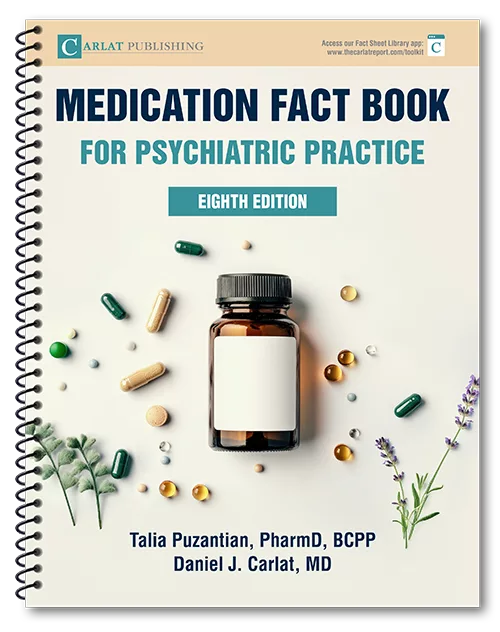We look at how often postpartum depression converts to bipolar, and what that means for treatment.
Publication Date: 07/21/2025
Duration: 10 minutes, 27 seconds
Transcript:
CHRIS AIKEN: Today, we look at how often postpartum depression converts to bipolar, and what that means for treatment.
KELLIE NEWSOME: Welcome to the Carlat Psychiatry Podcast, keeping psychiatry honest since 2003.
CHRIS AIKEN: I’m Chris Aiken, the editor-in-chief of the Carlat Report.
KELLIE NEWSOME: And I’m Kellie Newsome, a psychiatric NP and a dedicated reader of every issue.
CHRIS AIKEN: Postpartum depression begins within four to six weeks of delivery. It’s four weeks in DSM-5, and six weeks in ICD-11, and some argue for an even longer time span. But regardless of where you draw the line, we know that the onset peaks around two weeks after delivery. Until recently, postpartum depression was approached much like any other major depressive episode, typically managed with psychotherapy and antidepressants, with sertraline often preferred due to its relative safety for breastfeeding mothers. But two developments are changing that. First is the growing awareness that many cases of postpartum depression are due to bipolar disorder, where antidepressants would not be a good idea. If a woman is in her first episode of depression, it is 3 times more likely to be a bipolar type if the episode comes on post-partum than if it comes on at other times. The other development that is challenging sertraline’s dominance is zuranolone – Zurzuvae – a neurosteroid approved in postpartum depression that we covered last week. Today, I’m going to look at the bipolar piece. Zuranolone is not a treatment for bipolar depression, although Sage Therapeutics is exploring it there. But from everything we know about the drug, which imitates the neurohormone allopregnanolone and has gaba-ergic, benzodiazepine-like effects, zuranolone is unlikely to trigger mania. And that is a meaningful advance, because if you give an SSRI like sertraline to a woman with postpartum depression, there’s a good chance that you might have the wrong diagnosis, and the SSRI may flip the depression into mania or mixed states. But just what is that chance? Some studies estimate around 25% of women with postpartum depression have a bipolar diagnosis that hasn’t revealed itself yet. Women who are hospitalized, have mixed features or psychotic features, or who have a family history of bipolar disorder are at greater risk. But the definition of bipolar disorder keeps changing, and some people, like David Kupfer, who edited DSM-5 – and myself – view this diagnosis as a spectrum, where there isn’t a fine line separating unipolar depression from bipolar. When looked at through the spectrum lens, 40-50% of women with postpartum depression have strong bipolar features, if not actual DSM bipolar disorder. One large study of postpartum depression looked at it through both a spectrum and a traditional, categorical lens. It was the international BRIDGE study. In 2012, researchers compared 900 women in their first episode of depression – some were postpartum, and others were not. Here’s what they discovered. From the categorical lens, using strict DSM-IV criteria, 15% of the postpartum women had bipolar, while only 5% of the other women did. Those numbers are similar to a larger, longitudinal study that followed over 100,000 women in their first episode of depression for 15 years (Danish registry study). When followed over time, 14% in the postpartum group converted to bipolar, compared to only 4% of the non-postpartum women, using DSM criteria. Back to the BRIDGE study. After clarifying the DSM rates, the researchers looked at it through the spectrum lens. This includes true DSM bipolar disorder, as well as those with brief recurrent hypomanias and other markers of bipolarity. From this spectrum view, 40% of the postpartum women had bipolar compared to 20% of the women who were not postpartum. And finally, they looked at the rates through the lens of a rating scale – the hypomanic checklist 32. On that scale, 50% of the postpartum women screened positive for bipolar disorder compared to 38% of the other women. This wide range of numbers—15% to 50%—highlights the challenges of diagnosing bipolar, especially in first episode when we don't have much history to guide us. The important thing is to acknowledge that uncertainty. Yes, the screening instrument will have false positives, and on the other hand, the strict DSM criteria will miss women whose bipolar hasn't fully expressed itself yet. So, I would keep an open mind when following the patient because the truth lies somewhere between those 15 and 50% figures. If you see a woman with postpartum depression, you need to treat them quickly, but that means you’ll be treating them with very limitedinformation. And that is where zuranolone has a niche. Yes, I know the criticism of the med – that it’s just a two-week course, so it may not keep people out of depression, but its lack of prevention is balanced by its safety in bipolar during this vulnerable time when mood instability often crops up. We can’t be sure what the diagnosis is during postpartum depression, but we also can’t wait around to find out. We have to get them better quickly. Zuranolone checks all those boxes – rapid action, decent effect size, and no known risk of causing mania or mixity. It buys some time, and yes, some women will relapse off it, but by that time, we may have a better idea of whether they are closer to the bipolar or unipolar side of the spectrum.
KELLIE NEWSOME: Let’s pause for a preview of the CME quiz for this episode. Earn CME for each episode through the link in the show notes.
1. What is the risk of bipolar disorder in women with postpartum depression?
A. 15-25%
B. 5-20%
C. 50-70%
D. 15-50%
CHRIS AIKEN: Zuranolone treats postpartum depression by rebalancing neurohormones, but hormonal shifts are not the only cause of postpartum depression. It is an inflammatory state, and the anti-inflammatory celecoxib treated postpartum depression last year in a randomized controlled trial. The dose is 200mg twice a day, and in that trial, celecoxib also increased BDNF and reduced inflammatory biomarkers. Circadian rhythms are also disrupted, and evidence supports morning light therapy and evening darkness (or blue light-blocking glasses when awakened by the newborn) (Bennett S et al, Med Hypotheses 2009;73(2):251-253). For women who undergo a cesarean section, using esketamine as the anesthetic may prevent postpartum depression, as it did in twelve controlled trials (Frivaldszky L et al, J Psychiatr Res 2025;183:164-173). Aerobic exercise and a healthy diet are helpful for postpartum episodes, and psychotherapy is a critical part of recovery. As a first step, bring the family in to improve understanding, reduce conflict, and problem-solve ways to increase support and, particularly when it promotes promote the mother-infant bonding and improves social supports. Simply providing the mother with an ergonomic infant carrier prevented postpartum depression in a randomized trial of low-income mothers (Little EE et al, J Affect Disord 2023;340:871-876). Next week, we’ll look at the psychological side of the illness. Join the conversation and get daily research updates from Dr. Aiken’s Daily Psych feed. Search for ChrisAikenMD on LinkedIn, Twitter, Facebook, and Bluesky.


_-The-Breakthrough-Antipsychotic-That-Could-Change-Everything.webp?t=1729528747)



